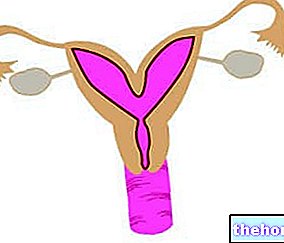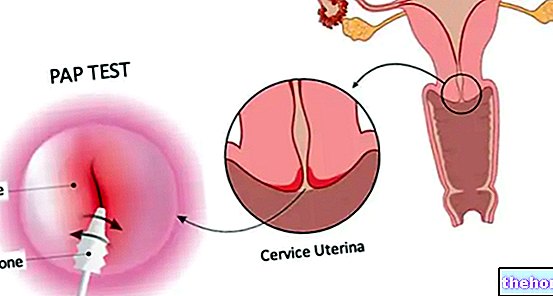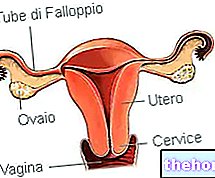Menstrual delay
Among the various disorders related to menstruation, oligomenorrhea indicates an alteration in the duration of the ovarian cycle, which occurs with a delay of more than four days: in other words, we speak of oligomenorrhea when the interval between one menstruation and the other exceeds 32-35 days.
Duration of the cycle
In women of childbearing age, with the exception of pregnant women and the puerperal period (after childbirth), the cycle normally lasts 23-32 days, and menstruation should last up to a maximum of eight days: if these rhythms are not respected, some problems may arise.

When the time lapse between two menstrual cycles exceeds 3 months, the meaning oligomenorrhea it is refined to “amenorrhea”, which indicates precisely a long interruption of the cycle.
Biological clock
Oligomenorrhea, in general, does not create and does not reflect real pathologies: in fact, if the woman is healthy from a gynecological point of view, therefore not suffering from fibroids, malignant tumors, polyps, abdominal pain and consistent menstrual disorders, the " oligomenorrhea does not cause significant consequences, if not the discomfort that can derive from "waiting" for the menstrual cycle.
To better understand the concept, let's make a metaphor with the "biological clock. Every woman has her own biological clock, which is important for monitoring the timing of menstrual regulation: sometimes, for various reasons, it can happen that the gears of the" biological clock "jam , and the body responds inappropriately by presenting oligomenorrhea, menorrhagia, metrorrhagia, polymenorrhea etc.
The biological clock can ideally be divided into two periods: the pre-ovulation phase and the post-ovulation phase. Generally, the post-ovulatory stage, which coincides with the period following ovulation, is constant; what changes, and which could cause oligomenorrhea, therefore delayed menstrual flow, is the pre-ovulatory stage, which is variable. Exactly this last phase, lasting too long, could generate that expectation which translates into oligomenorrhea.
Incidence
Oligomenorrhea represents the most frequent menstrual irregularity among women; in particular, during the first year after the first menstruation (menarche), it is estimated that 25% of new women often complain of oligomenorrhea, since the organism has yet to "settle down" and the "biological clock - to reconsider the same metaphor - must still be effectively scheduled.
Causes
The causes that can cause oligomenorrhea are many and can change from woman to woman: in fact, as we have said, among young women it is a fairly widespread phenomenon - not so much for the presence of problems at the level of the "genital system - but for the fact that the organism has yet to adapt to the new body. In adult women, the phenomenon of oligomenorrhea is, however, frequent: statistics show that 35% of women suffer from periodic delays; probably, in these cases, oligomenorrhea is related to hyperandrogenism, that is to say a high rate of male hormones in women. The multi-follicular ovary also represents a possible factor affecting oligomenorrhea: multiple follicles are scattered inside the ovary and can generate unpleasant delays. Furthermore, psycho-physical stress, fatigue, anxieties, worries and overwork can influence the regularity of the menstrual cycle; however, these factors just described have no meaning in pathological terms.
Premature menopause
A link has been recorded between frequent oligomenorrhea in adulthood and early menopause: there are still no studies that actually show a direct connection, but it seems that frequent delay in menstruation may somehow anticipate the period of menopause.
The occasional delay in the menstrual cycle should not cause concern; vice versa, when oligomenorrhea occurs frequently, it is advisable to consult a doctor for a gynecological check-up; eventually, the specialist will be able to advise the patient on a progestin hormone treatment for the reconciliation of menstruation and regularization of the cycle.
Summary
To fix the concepts ...
Oligomenorrhea
Description
Alteration of the ovarian cycle that manifests itself with a delay of more than four days: if the interval between one menstruation and the other exceeds 32-35 days, we speak of oligomenorrhea
Incidence
Women of childbearing age, excluding pregnant women and women in the postpartum period. Oligomenorrhea affects 35% of new women during the first year after menarche
Amenorrhea
When oligomenorrhea exceeds 3 months, it is called amenorrhea
At what stage does oligomenorrhea occur
The post-ovulation phase is constant
The pre-ovulation stage may be longer than normal: oligomenorrhea may occur at this stage
Influencing factors
- Malignant tumors, fibroids, polyps: more serious conditions that can predispose oligomenorrhea
- Multi-follicular ovary and hyperandrogenism: they very often cause oligomenorrhea
- Stress, fatigue, worry, work: factors that can affect the regularity of the cycle
Aftermath
Abdominal pain, stress
Possible (but certainly not) advance of menopause
Therapy
A progestin hormone therapy regulates the menstrual cycle and prevents oligomenorrhea




























